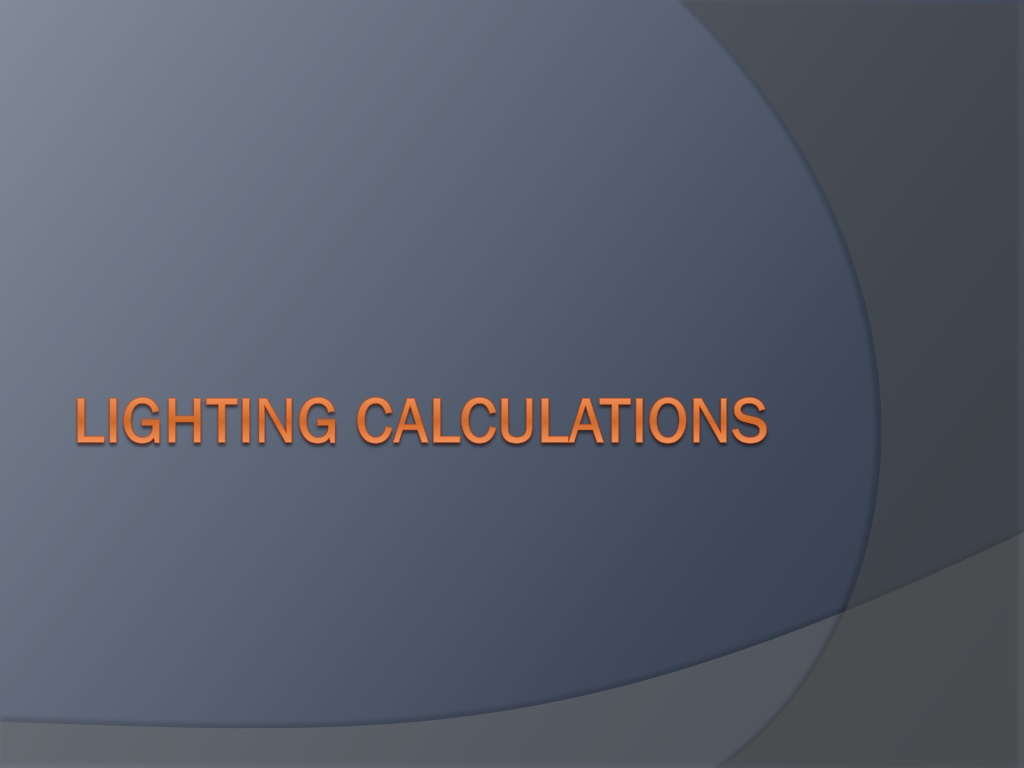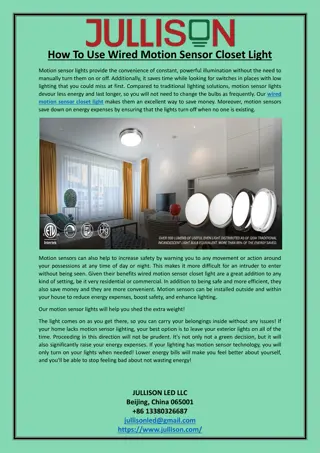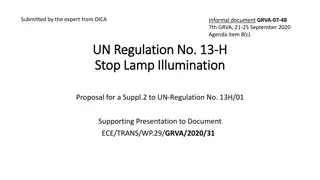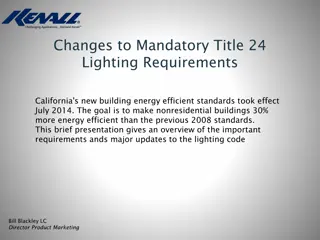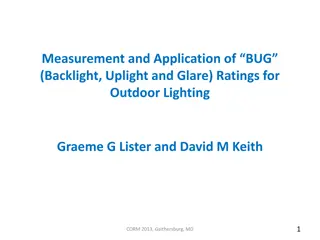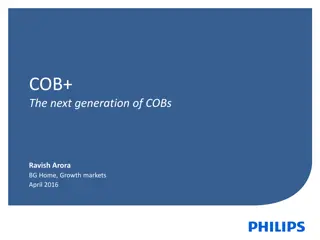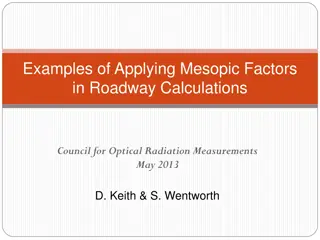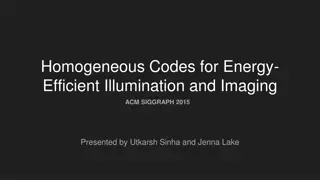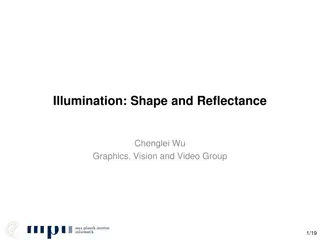Understanding Lighting Calculations for Effective Illumination
Lighting calculations play a crucial role in determining the optimal lighting levels for various spaces. The Lumen Method and Point Calculations help evaluate illumination requirements, while factors like Light Loss Factor and Coefficient of Utilization ensure efficient lighting design. Learn how to calculate foot-candles, lumens, and luminaires needed for different settings using practical examples.
Download Presentation

Please find below an Image/Link to download the presentation.
The content on the website is provided AS IS for your information and personal use only. It may not be sold, licensed, or shared on other websites without obtaining consent from the author. Download presentation by click this link. If you encounter any issues during the download, it is possible that the publisher has removed the file from their server.
E N D
Presentation Transcript
LIGHTING CALCULATIONS LIGHTING CALCULATIONS
Lighting Calculations Lumen Method determines average light levels in large open areas Point Calculations determines light levels at a specific point on an object or surface
Lumen Method Calculations 1 foot candle (FC) = 1 Lumen (Lms) divided by 1 square foot (area / A) 1 FC = 1 LM A Illuminance (E) (amount of light falling onto an object measured in foot candles) = Lumens divided by Area (in sq. ft.) E = Lms A (sq. ft.)
Lumen Method Example 1 Solving for Illuminance(E) Level Room 10 x 15 5 down lights 1000 Lumens each down light E = Lms A Illuminance = Lumens divided by Area A = 10 x 15 = 150 sq. ft. 1000 Lumens x 5 down lights = 5000 lumens E = 5000 Lms 150 sq. ft. E = 37.5 Lms per sq. ft. E = 37.% foot candles (FC)
Lumen Method Example 2 Solving for Lumens or Luminaires needed Room 10 x 15 (A = 150 sq. ft.) Illuminance level (E) = 60 foot-candles Need Lumens / Luminaires E = Lms A - original equation Lumens needed = Illuminance x Area Lms = E x A Lms = 60 E x 150 sq. ft. Lms = 9000 Lumens
Lumen Method Example 2 Solving for Lumens or Luminaires needed Lumens needed = Illuminance x Area Lms = E x A Lms = 60 E x 150 sq. ft. Lms = 9000 Lumens 550 lumens = per luminaire Luminaires needed = Lumens needed divided by Lumens per luminaire Luminaires (X) = 9000 (lumens) 550 Lumens per Luminaire 9000 550 = 16.36 Always round up with any point. Luminaires needed = 17
Lumen Method Safety Factors Light loss factor (LLF) light loss due to deteriorating lamps Industry standard of .85 for a light loss factor Coefficient of Utilization (CU) effectiveness of luminaires working on surfaces of the space to deliver light to the target surface. Direct fixture or downlight CU = 85% (0.85) Indirect fixture CU = 50% (0.50) Spot or Accent CU = 95 (0.95) Wash or ambient CU = 75% (0.75)
Lumen Method Calculations with Safety Factors Illuminance = Lumens Area Illuminance = (Lumens x LLF x CU) Area Lumens needed = Illuminance target x Area Lumens needed = (Illuminance target x Area) (LLF x CU)
The Point Calculation Method Estimate location of lighting equipment Light density = Candle power = Candela Candela information given by Manufacturer Center Bean Candle Power CBCP center of a directional light Illuminance = Candela value Distance (squared)(in feet) E = CD D2
Point Calculation Example 1 10 -0 ceiling Accent Fixture Above a plate on a table 3; above the finished floor (A.F.F.) Illuminance = Candela value Distance2 E = CD D2 CD = 10,000 Candelas D2 = 7 ft 2 = 49 square feet (units get squared too) E = 10,000 CD 49 sq.ft. E = 204 Foot-candles
Point Calculation Example 2 10 -0 ceiling Accent Fixture Above a plate on a table 3; above the finished floor (A.F.F.) Candela value needed = Illuminance level desired x distance squared CD = E x D2 E = 150 Foot-candles D2 = 7 ft2= 49 sq. ft. CD = 150FC x 49 sq. ft. Candela value needed = 7350 Candelas
Luminaire and Lamp Type Candela represented in form of a distribution diagram Provided by manufacturers When sources is not perpendicular (90 degree angle to surface) Candela value needed = (Illuminance level desired x distance squared) cosine of the angle CD = (E x D2) cosine of angle E = (CD x cosine of angle) x D2
Point Calculation Example 3 10 -0 ceiling Accent Fixture Above a plate on a table 3; above the finished floor (A.F.F.) 30 degree angle for fixture 100 foot-candles Candela value needed = (Illuminance level desired x distance squared) cosine of angle CD = (E x D2) cosine of angle E = 100 FC (foot-candles) D2= 8.1 feet = 65 sq. ft. Cosine of angle = cosine of 30 degrees = 0.87 CD = (100 FC x 65 sq. ft.) 0.87 Candela value needed = 7471 Candelas.
